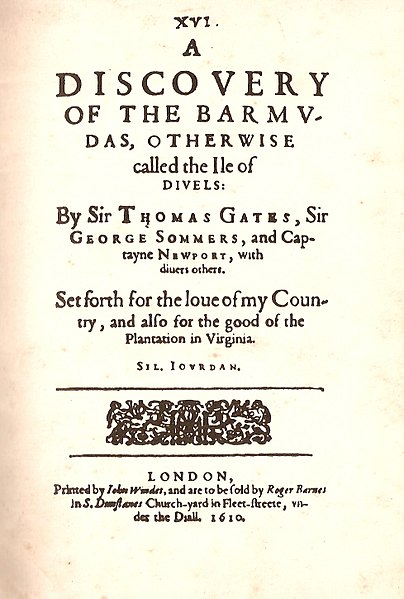Bermuda was first documented by a European in 1503 by Spanish explorer Juan de Bermúdez. In 1609, the English Virginia Company, which had established Jamestown in Virginia two years earlier, permanently settled Bermuda in the aftermath of a hurricane, when the crew and passengers of Sea Venture steered the ship onto the surrounding reef to prevent it from sinking, then landed ashore. Bermuda's first capital, St. George's, was established in 1612.
Silvester Jourdain's A Discovery of the Barmudas.
The State House, the building that housed the House of Assembly from 1620 until 1815.
John Smith wrote one of the first Histories of Bermuda (in concert with Virginia and New England).
Raking salt on the Turks and Caicos Islands on a 1938 postage stamp.
Sea Venture was a seventeenth-century English sailing ship, part of the Third Supply mission flotilla to the Jamestown Colony in 1609. She was the 300 ton flagship of the London Company. During the voyage to Virginia, Sea Venture encountered a tropical storm and was wrecked, with her crew and passengers landing on the uninhabited Bermuda. Sea Venture's wreck is widely thought to have been the inspiration for William Shakespeare's 1611 play The Tempest.
Presumed portrait of Sir George Somers (with possible Sea Venture in left background)
Sylvester Jordain's A Discovery of the Barmudas, 1610
Replica of the Deliverance on Ordnance Island, 2007 (since 2022, replica disassembled)






